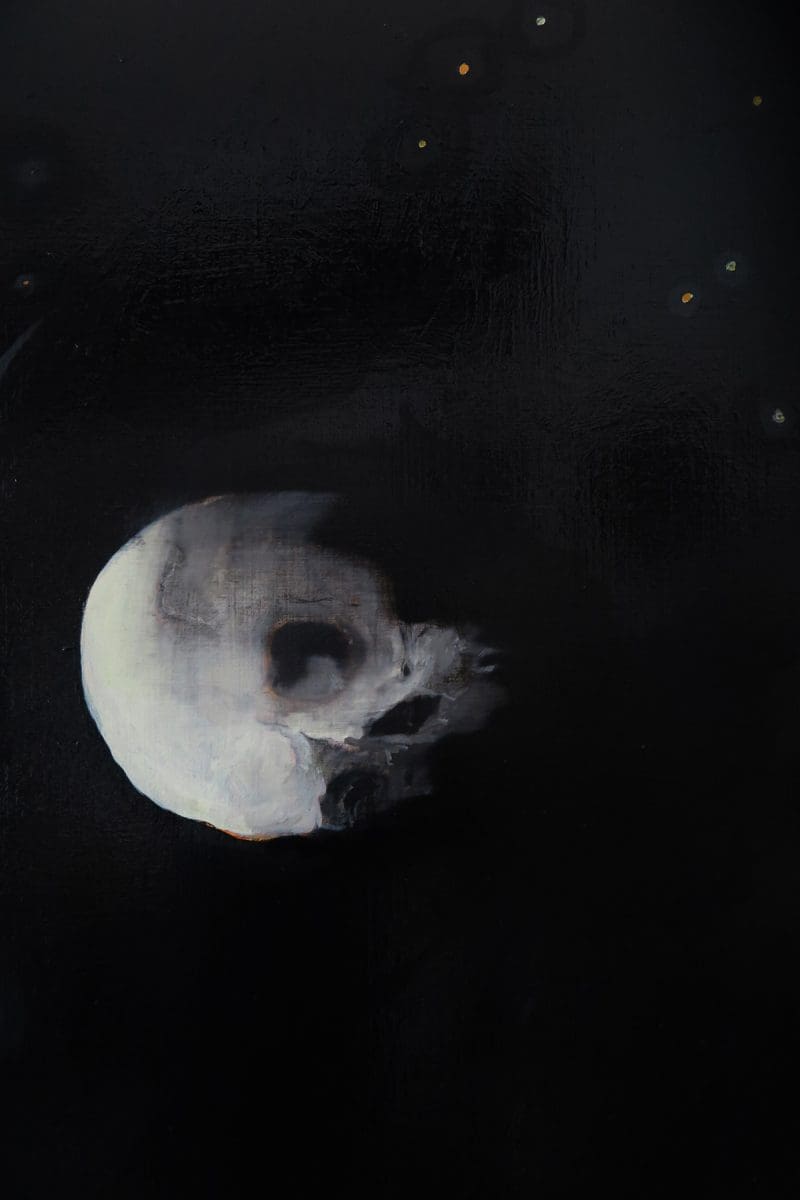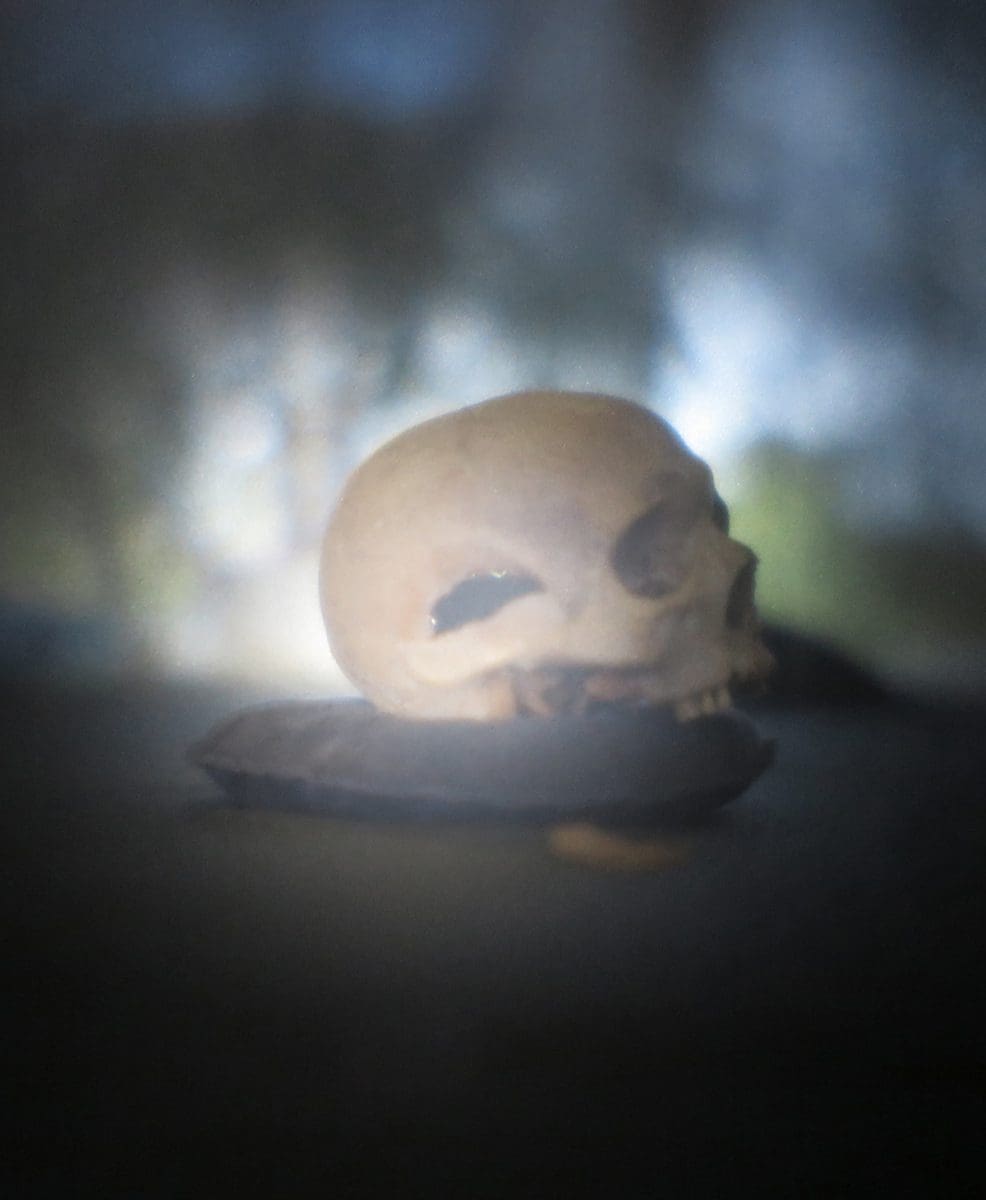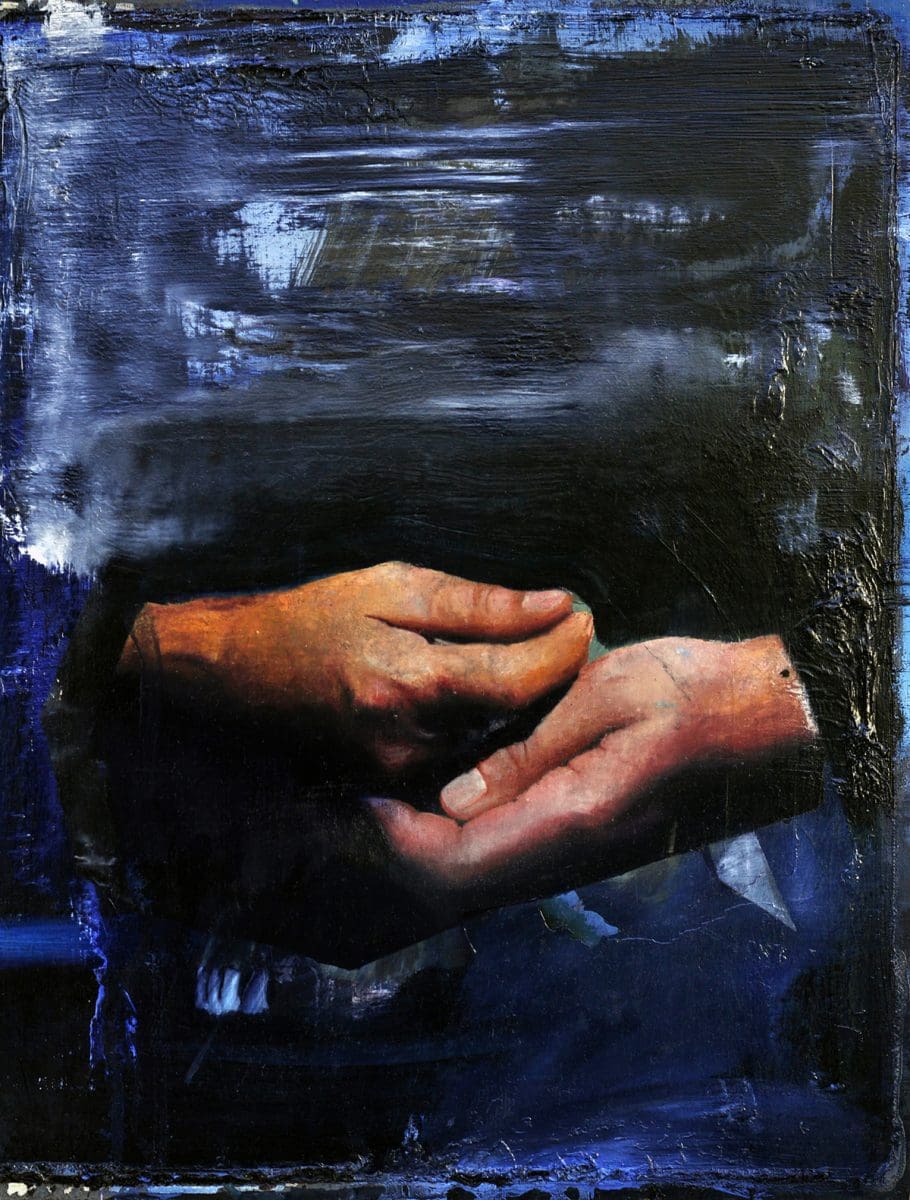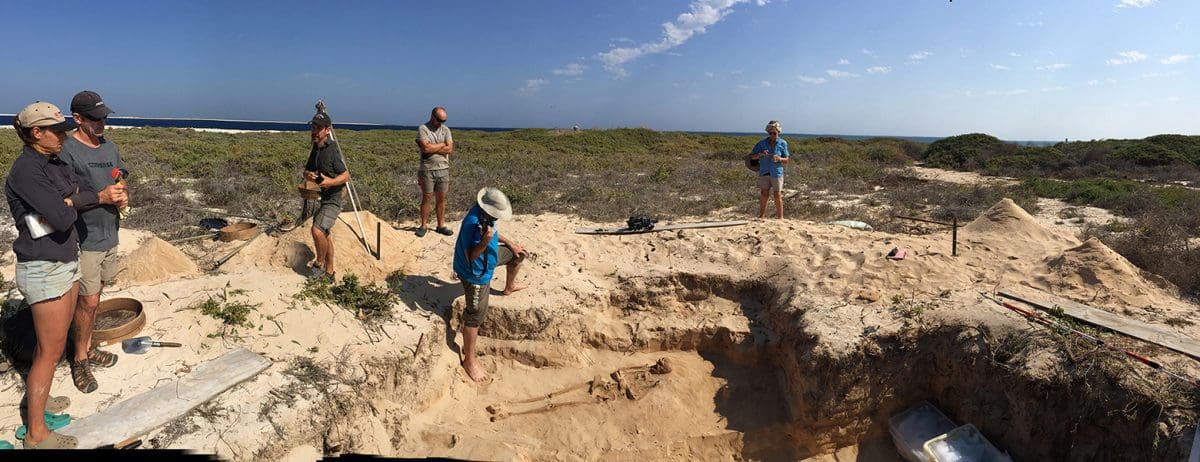
Piercing the veil
A new exhibition at Buxton Contemporary finds a rich complexity in the shadowy terrain between life and death.

Paul Uhlmann, Batavia 4th June 1629 (night of my sickness), 2017, oil on canvas, one of three panels each at 1.8 x 1.2M).

Paul Uhlmann, Batavia skull (camera obscura I), 2015, photo-print on aluminum, 15 x 12cm.

Robert Cleworth, memento mori – two hands, 2016, oil on wood panel, 50 x 38cm.

Robert Cleworth, Arm and Seascape, 2016, oil on canvas, 95 x 84 cm.

discovery of SK16 on Beacon Island. Photographer: Jeremy Green, 2015.
The desperate days following the 1629 wreck of the Batavia are a nightmarish chapter in Western Australian history. Following a mutiny, the Dutch East India Company ship deserted its fleet, running aground in the scrubby, low-lying Houtman Abrolhos island chain off Geraldton. Captain Jacobsz set off in a longboat for assistance and water. In his absence, the 270-odd survivors, soldiers, mariners, merchants and civilians, were subjugated by the megalomaniac and chief mutineer, Jeronimus Cornelisz. Under his brutal command, men, women and children were marooned, interrogated, starved and cut down for dissent, or on whim. By the time of Jacobsz’ remarkable return, with troops and a rescue ship, three months had passed and over 110 people had been murdered.
Batavia (1629) presents new work in forensics, archaeology and art to reconstruct this tragic episode. “Those shipwrecked survivors must have felt they’d slipped out of consciousness, that their actions were out of sight. Therefore, lawlessness ensued,” says artist Paul Uhlmann. “These events are part of our collective story. We must work towards understanding them.” The exhibition also foregrounds the fellowship between Cornelisz and an artist and accused heretic called Torrentius. Torrentius’ only extant painting, an allegory of life’s brevity and uncompromisingly fleshy end, reverberates with the experiences of the wretched castaways.
Batavia (1629) respectfully reconstitutes each victim’s personhood through a union of artistic and scientific processes. “At their cores, both are activities of focused curiosity,” says Uhlmann. The artist’s camera obscura images and immersive paintings will be installed alongside Robert Cleworth’s writhing amalgamations of paint and historical print media, wreck artefacts and photograms, x-rays and projections of the recovered remains. With each turn, Uhlmann and Cleworth incorporate poetry and feeling into the techniques of their scientist and historian collaborators.
BATAVIA(1629): giving voice to the voiceless
Lawrence Wilson Art Gallery
7 October – 16 December